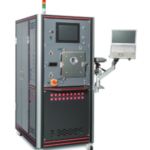
We often hear the word “vacuum” and it is used quite a bit in our daily lives.
For example,
The vacuum packing for long term food preservation.
A mechanism that keeps hot drinks in a thermos from getting cold.
A mechanism for drying instant ramen noodles.
And so on.
Contents
What is a vacuum?

The air which we breath is mainly composed of nitrogen and oxygen molecules, although we cannot recognize them with the naked eye, such molecules are crawling everywhere.
Specifically, how much nitrogen and oxygen molecules are drifting…
At 0 ℃ near the ground, there are about 600000000000000000000000 in a volume of 22.4 liters.
If you studied chemistry, you may be familiar with the Avogadro constant.
Although we are not aware of, we live with air that is packed with these molecules.
We feel the weight unconsciously, and the force that is being imposed is called atmospheric pressure.
It is about one atmospheric pressure near the ground.

The air becomes thinner when you are in the mountains at high altitude or flying in an airplane.
The number of molecules in the air is also reduced, resulting in lower atmospheric pressure.
A water boils at a lower temperature than on the ground when climbing a mountain, or bagged snacks brought on an airplane is inflated in the air, due to the lower atmospheric pressure.
The ultimate state with no molecules in the thin are is called vacuum.
However, it is difficult to completely eliminate molecules such as nitrogen and oxygen on the earth.
There are different types of vacuum.
Perfect vacuum
The state in which there are no molecules at all in the atmosphere = zero atmospheric pressure.
It is only a virtual state and it has not been realized.
For example, although space is said to be a vacuum, it is believed that molecules do exist albeit in trace amounts even in the universe.
It is not easy to realize on the earth.
Negative pressure
A condition in which the pressure is lower than standard atmospheric pressure (1 bar).
The vacuum used in industry is this negative pressure, which is divided into four levels according to JIS standards: low, middle, high and ultra-high vacuum.

The thermos mechanism introduced earlier uses a low vacuum.
The drying Instant ramen noodles uses high vacuum.

Since vacuum conditions can generate plasma (electrical discharge phenomenon) uniformly, it is used in the mechanism of film deposition by sputtering equipment.
AGUS offers a variety of vacuum equipment such as sputtering equipment.
For more information on our vacuum equipment, Click here.





